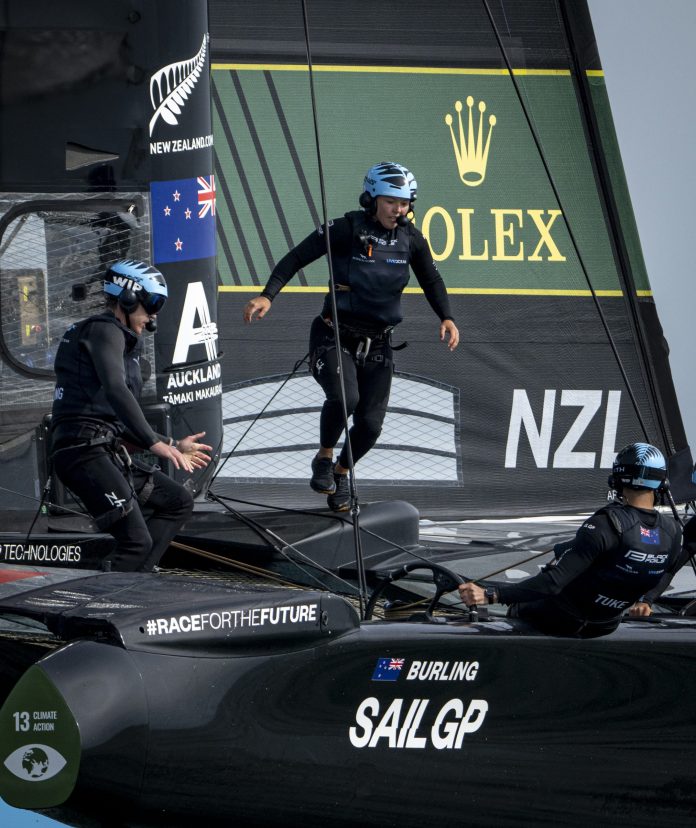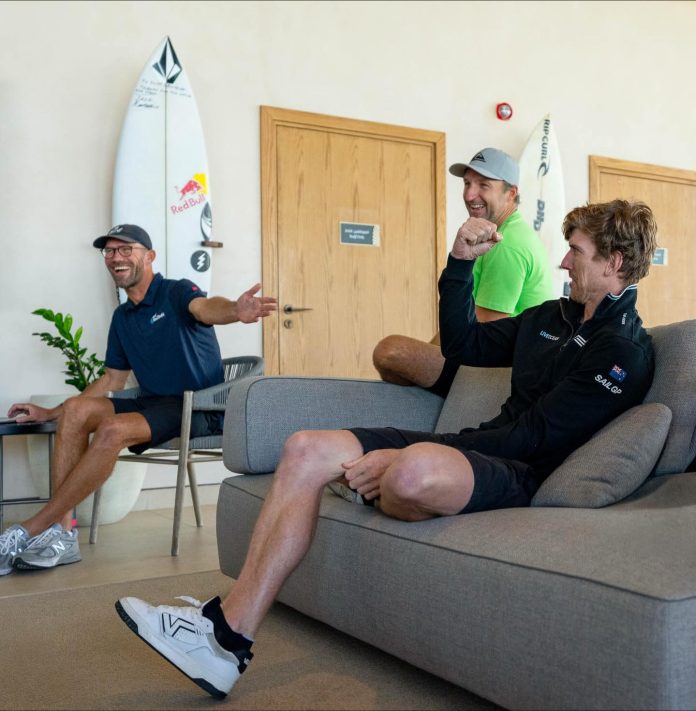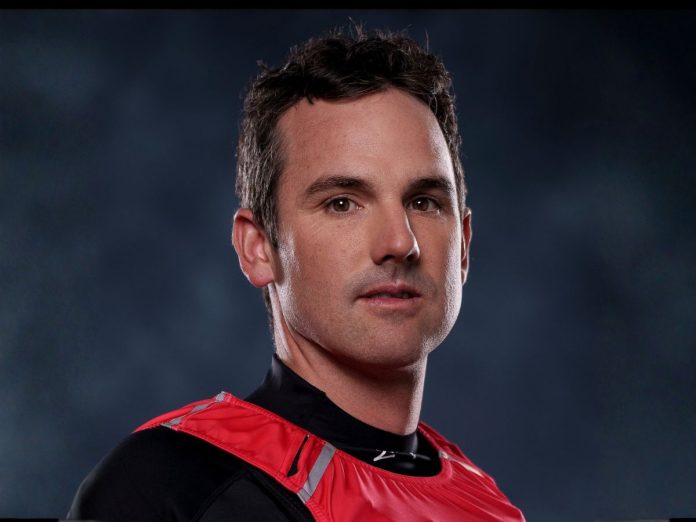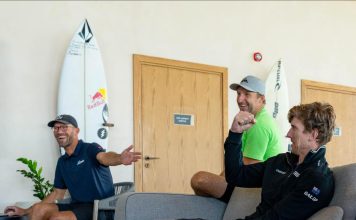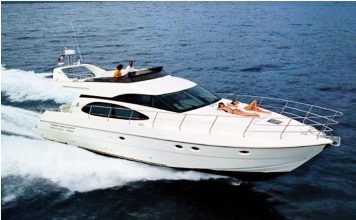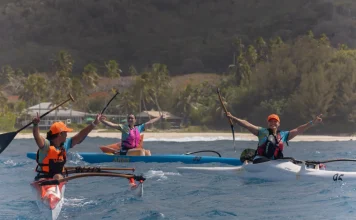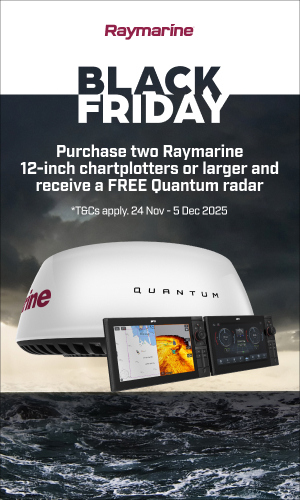Liv Mackay – SailGP strategist and foiling trailblazer |
|---|
| In 2019, Liv joined the New Zealand SailGP Team following a women’s invitational trial. Since then, she’s become an integral part of the Black Foils crew, serving as strategist — or “helm assist” — across multiple seasons. Working closely with Peter Burling and coach Sam Meech, Liv brings tactical clarity, racecourse analysis, and pressure calls to every SailGP race. Her insights have helped secure event wins in every single event location in the 2025 season, and beyond. As the only woman onboard the Black Foils, Liv stands out not for her gender, but for her growing authority as a strategist. With minimal practice time and ever-changing venues, her calm command of race prep is proving a major asset. |
The navigator behind the navigator
When you think of elite racing decisions aboard a SailGP F50, most of us picture the helm. But sitting just behind New Zealand’s skipper Peter Burling is a crucial conduit — strategist Liv Mackay. Her job? Read the race as it unfolds and help Burling and the crew make faster, sharper calls under pressure.
“I work closely with Sam Meech in the coach’s booth and Jo Aleh,” says Mackay. “The idea is to give Pete the clearest possible picture to make decisions — because at the end of the day, he’s the one pulling the trigger.”
From onboard cues like wind and pressure to opposition movement and lay lines, Liv’s eyes and instincts help translate a chaotic, kinetic sport into usable information.
“I’m calling intersections, seeing what’s building, what’s shifting. Sam’s adding another layer with live data from the coach’s booth — almost like a helicopter view.”
In a league where a one-degree mistake can cost a regatta, this kind of triangulated insight matters.
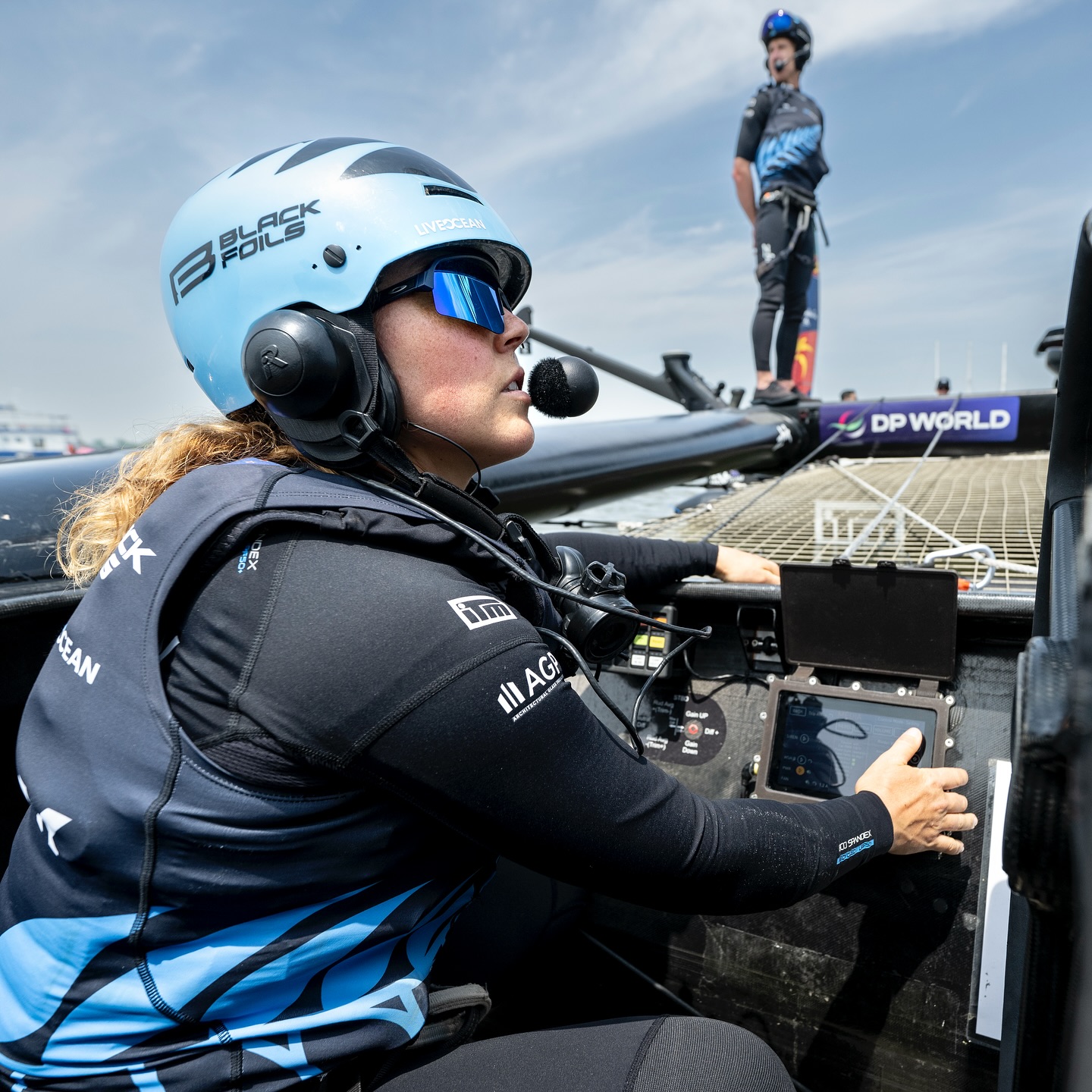
It starts long before the start gun
While the public sees six or seven short races on a weekend, the strategic grind begins much earlier.
“It never really stops,” she explains. “We’re still debriefing Portsmouth. But about ten days before the next event, we shift focus and start analysing venue features — currents, markers, course geometry. We begin thinking about what will define this race.”
Weather history, forecast trends, channel hazards — it’s all loaded into a mental map. “For Portsmouth, for example, mark one was key. If you could drive at mark one, you were almost guaranteed a top-three finish. That sort of insight becomes critical.”
These patterns help shape the starting playbook, boat placement, and risk appetite. But it’s not data overload. “We’re still figuring out what’s most useful. Every day is different — five knots versus 15 in waves changes everything.”
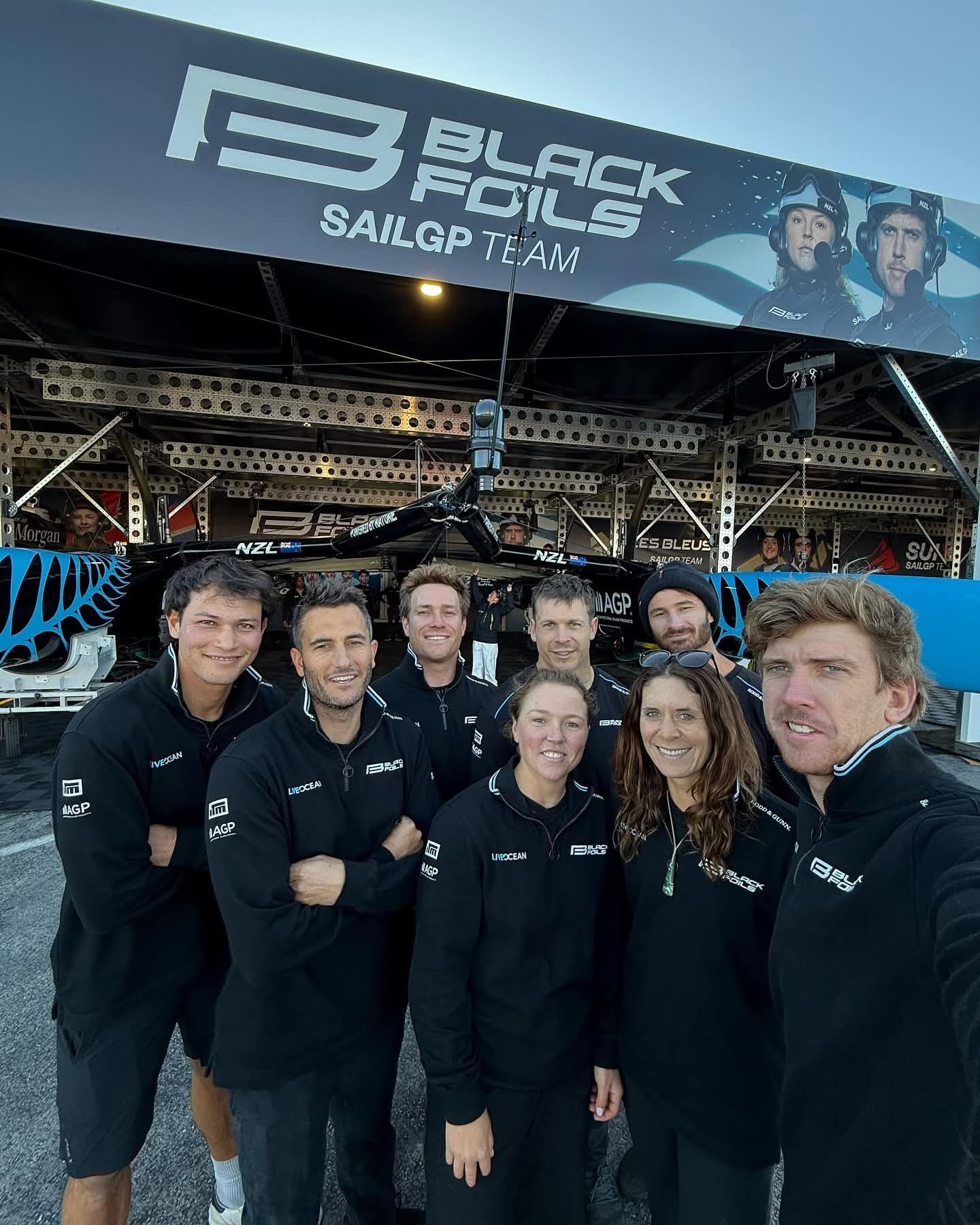
Germany: no map, no problem
The next event — Germany — will be a clean slate for nearly all teams.
“It’s such a unique venue. We couldn’t find many people who’ve even sailed there,” Liv admits. “So that levels the playing field. It will come down to who can learn the fastest — and that’s something we think we do well.”
Why the confidence? “It’s the work between events. We have a lot of meetings, we review a lot together. And because we often get no real sailing time, that prep has to count.”
Most race weekends offer little or no chance to practise. “We might get a five-minute warmup. So we go in loaded — mentally, not physically.”
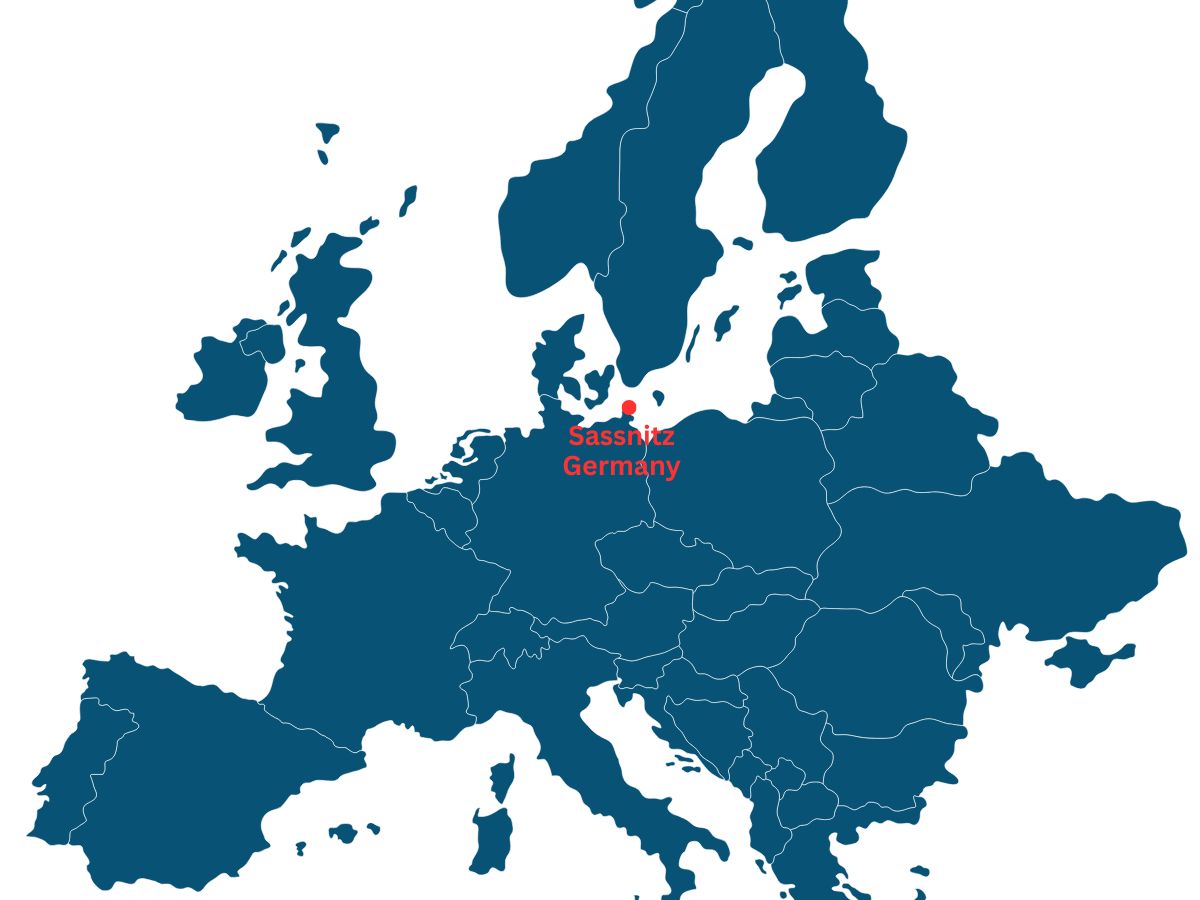
Sassnitz set to test the fleet: SailGP’s Baltic battleground |
|---|
| SailGP heads to uncharted waters on 16–17 August 2025, as Sassnitz, on Germany’s Rügen Island, hosts its first-ever Grand Prix. Exposed to the Baltic Sea and framed by dramatic chalk cliffs, Sassnitz promises a course unlike anything the fleet has seen — but closest in spirit to Copenhagen’s gusty flats, Plymouth’s coastal compression, and Saint-Tropez’s thermal trickiness. Wind and water conditions will be key. The area is known for light to moderate summer breezes, but with unpredictable shifts, narrow start-box geometry, and the possibility of choppy seas from fast-building weather fronts. With no prior SailGP data and minimal practice time, the learning curve will be steep. For Germany SailGP, led by Erik Heil, Sassnitz is a milestone — the team’s first home event and a chance to leverage local knowledge in front of a passionate crowd. But with top contenders like New Zealand and Australia in strong form, the pressure is on. Expect tight mark-one duels, short-course aggression, and a venue that rewards adaptability over brute speed. If SailGP is about pushing limits, Sassnitz may push them further than ever — with the raw Baltic proving an ideal proving ground. |
The human element, not the AI
With all this data flying around — and SailGP’s high-tech rep — are teams plugging these insights into artificial intelligence?
“No,” says Mackay with a laugh. “It’s all based on experience. We build playbooks, yes. We track venue patterns, sea breeze tendencies, tide behaviour. But it’s all human analysis. No models. No AI.”
What they do use is collective memory and strategic categorisation. “Some courses are offshore-influenced, some are tight harbour setups. We classify them by geometry, wind effects, fleet behaviour. That helps us anticipate the kind of race we’ll face.”
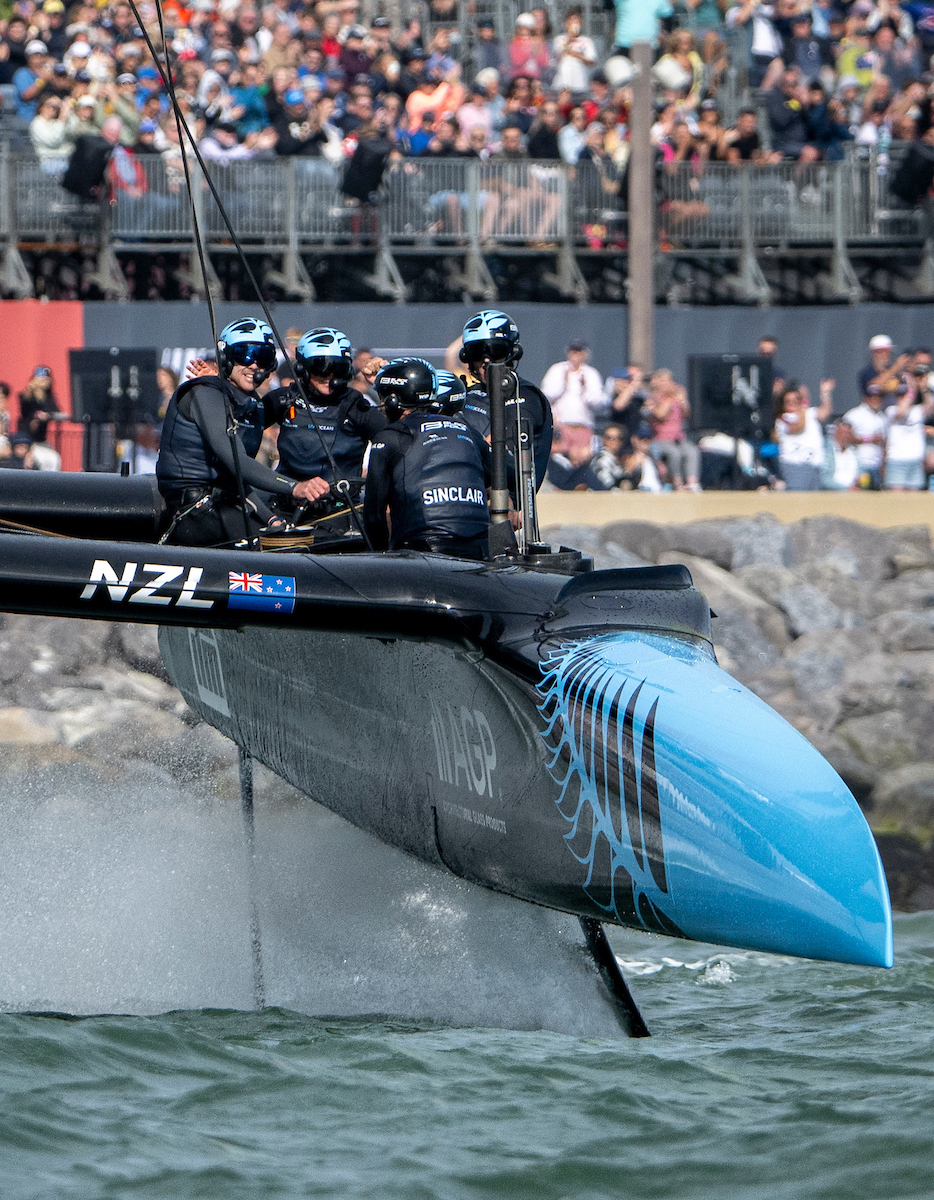
New blood, new momentum
After a tricky start to the year — with challenging results in Auckland and Sydney — the Black Foils feel like they’re regaining their edge.
“We took a while to find our feet as a team. But Los Angeles and San Francisco, even though the results weren’t stand-out, we felt really solid. New York and Portsmouth showed that the work is paying off.”
Part of that turnaround has been a new energy onboard. “Leo [Takahashi] has been a great addition. He’s younger, hungry, and brings excitement. And the team culture has always been strong — so that’s only grown.”
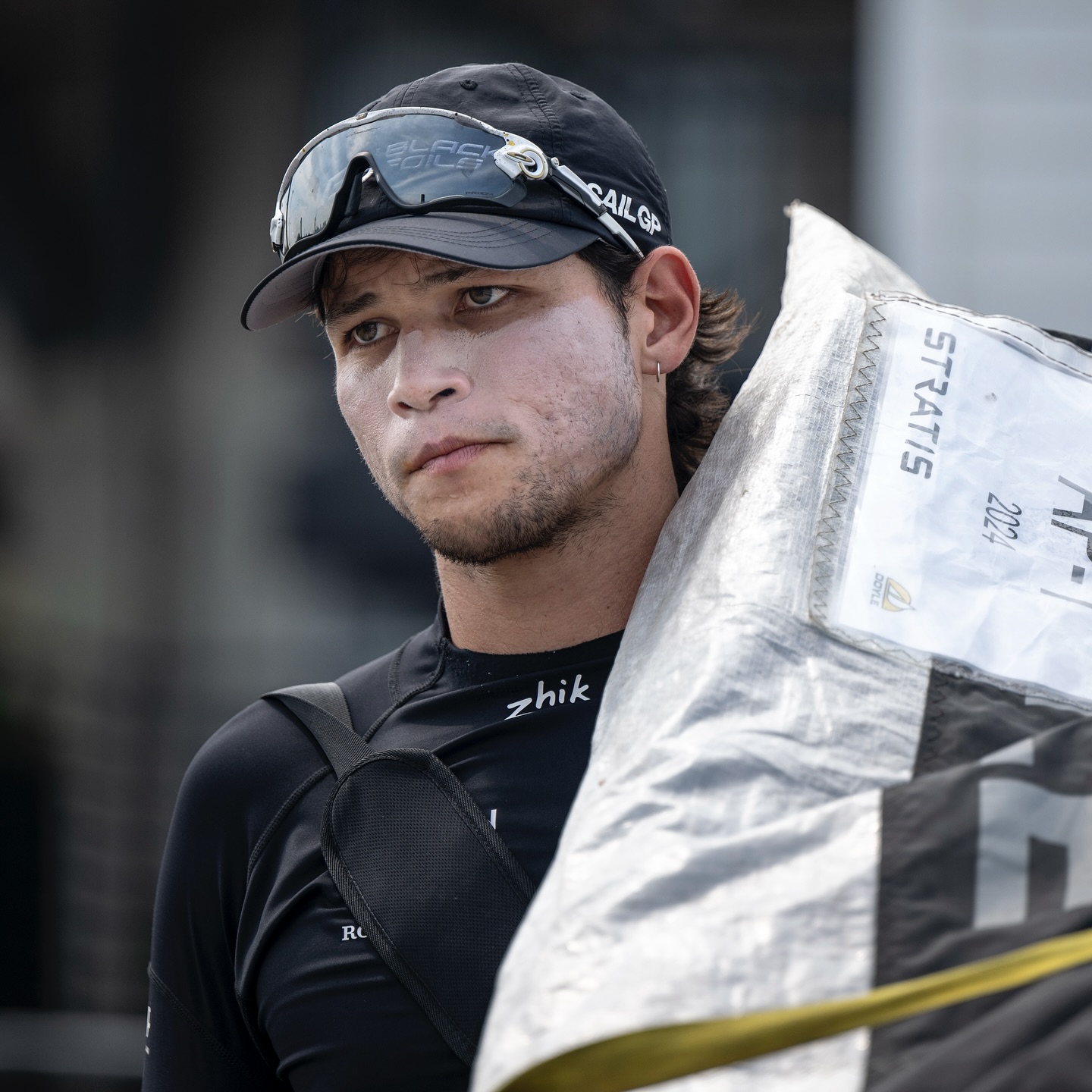
The road ahead: tight standings, short fuse
The next few events will be some of the most compressed in SailGP history — with four top teams neck and neck.
“We’ve never had this many back-to-back races,” Liv notes. “And with penalty points and damage in play, anything can happen. I think you’ll see teams being more aggressive.”
It’s also where we might see clear differentiation. “Some teams will build momentum. Others may not. With the T-foils still being new, and limited sailing time, you might see some serious jumps in performance.”
And for the Black Foils?
“We’re ready. It’s going to be intense — but exciting.”








